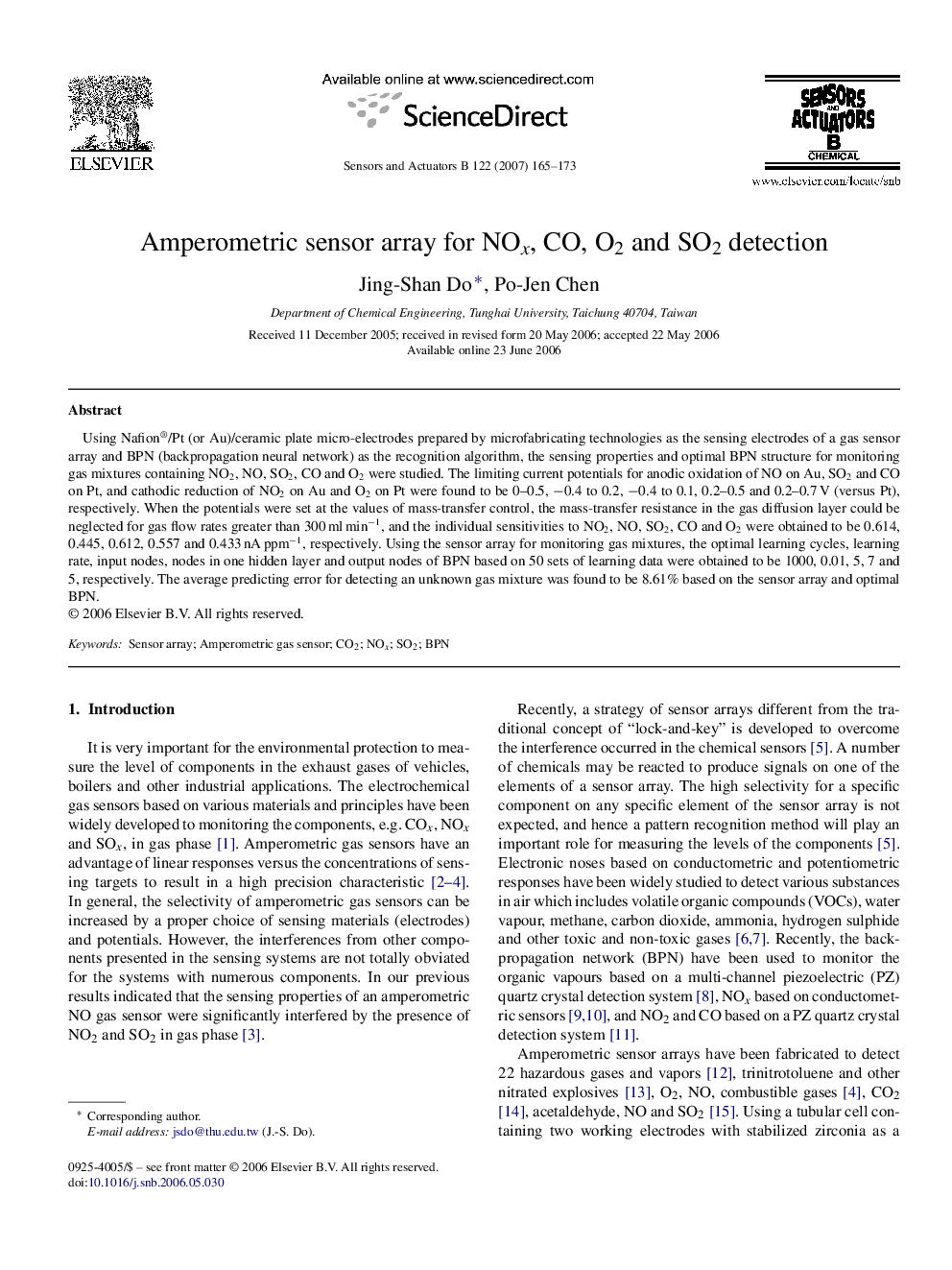| Article ID | Journal | Published Year | Pages | File Type |
|---|---|---|---|---|
| 744714 | Sensors and Actuators B: Chemical | 2007 | 9 Pages |
Using Nafion®/Pt (or Au)/ceramic plate micro-electrodes prepared by microfabricating technologies as the sensing electrodes of a gas sensor array and BPN (backpropagation neural network) as the recognition algorithm, the sensing properties and optimal BPN structure for monitoring gas mixtures containing NO2, NO, SO2, CO and O2 were studied. The limiting current potentials for anodic oxidation of NO on Au, SO2 and CO on Pt, and cathodic reduction of NO2 on Au and O2 on Pt were found to be 0–0.5, −0.4 to 0.2, −0.4 to 0.1, 0.2–0.5 and 0.2–0.7 V (versus Pt), respectively. When the potentials were set at the values of mass-transfer control, the mass-transfer resistance in the gas diffusion layer could be neglected for gas flow rates greater than 300 ml min−1, and the individual sensitivities to NO2, NO, SO2, CO and O2 were obtained to be 0.614, 0.445, 0.612, 0.557 and 0.433 nA ppm−1, respectively. Using the sensor array for monitoring gas mixtures, the optimal learning cycles, learning rate, input nodes, nodes in one hidden layer and output nodes of BPN based on 50 sets of learning data were obtained to be 1000, 0.01, 5, 7 and 5, respectively. The average predicting error for detecting an unknown gas mixture was found to be 8.61% based on the sensor array and optimal BPN.
